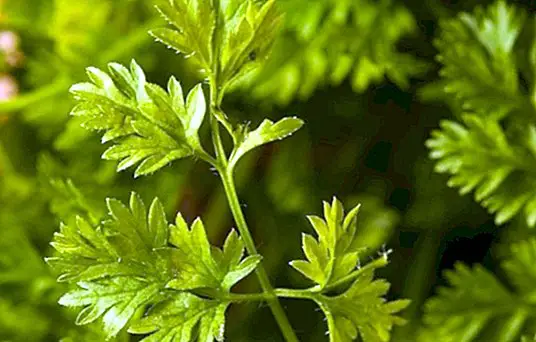How to relieve the pains of menstruation
The menstruation or period consists of the detachment and the expulsion of the endometrium outside the body of the woman. If fertilization does not occur, each month the inner layer of the uterus detaches, and the ovum is expelled in the form of blood through the vagina. This bleeding tends to last between 3 to 5 days (time that actually varies by many factors, such as diet, the existence of anxiety or stress, the suffering of certain diseases ...), while the period occurs every 28 or 30 days.
It is evident that the menstrual pain It is one of the most common and usual symptoms. This pain is medically known by the name of dysmenorrheaand it consists of a intense or very intense abdominal or pelvic pain that appears before or coincides with menstruation. It is also accompanied by other symptoms, such as: lumbar pain, ovarian pain, headache, swelling, fatigue, fluid retention, nausea, vomiting, diarrhea or constipation and anxiety and irritability.

And what are the causes of the pains of menstruation? The reason we must find it in the prostaglandins, some chemicals that we find in the walls of the uterus, which they are increasing little by little until menstruation occurs, at which time they are released with the objective of favoring the detachment of the endometrium. That is to say, Prostaglandins are responsible for uterine contractions, and also increase the sensitivity to pain in women. That is why menstruation hurts, hence it feels pain in the uterus and in the area of the lower abdomen.
Tips to relieve and calm menstrual pain
Watch your diet
Believe it or not, depending on the diet that you follow the symptoms of your menstruation could increase or decrease depending on what food you eat each day. In turn, the food you choose during the days of the period will help you feel better or worse.
Obviously, the best is opt for a varied and healthy diet eliminating refined foods and preserves. It is convenient to distribute the meals throughout the day, always eating in small quantities and between 5 to 6 times a day (for example, breakfast, mid-morning, lunch, snack and dinner).

During your own menstruation you can choose fruits, nuts, bread and pasta. These foods increase serotonin and will help you feel better and improve your mood. They also highlight others like whole grains, brown rice and seeds.
On the other hand, it is advisable to eliminate exciting and high-fat foods, such as coffee, chocolate, chips, margarine, butter and pastries. In turn, it is advisable to eliminate drinks with gas and alcohol, and excess salt (since it can increase fluid retention).
Add yeast to your day-to-day
The beer yeast is a nutritional supplement that consists of a type of yeast (Saccharomyces cerevisae) used for the manufacture of beer, characterized by being a very common fungus that we find easily in nature and particularly in our body, especially in the digestive system and also on the skin.
From a nutritional point of view Brewer's yeast is very rich in group B vitamins, which help in a very positive way when raising and increasing serotonin levels. It also contributes excellent amounts of zinc and selenium, that improve the correct hormonal function.
Opt for one of these infusions
There are certain medicinal plants that have useful benefits to relieve the pain caused by menstruation, since they act as analgesics and natural anti-inflammatories without practically associated side effects. Therefore, a very good option is to make infusions with some of these plants, and take 3 cups a day of any of them.

Here we talk about the most outstanding infusions:
- Sage infusion: this plant exerts an antispasmodic action useful to regulate the cycle of menstruation and to calm the pains. To make the infusion you need 1 cup of water and 1 handful of sage leaves. Put the water in a saucepan and when it starts to boil turn off the heat, add the sage, cover and let stand for 5 minutes. Then strain and drink. If you wish, you can drink 3 cups of this infusion a day.
- Infusion of calendula: This plant helps reduce menstrual pain and also the discomfort characteristic of the period. To make the infusion you need 1 liter of water and 40 grams of calendula flowers. Put the water in a saucepan and let it boil. When it starts to boil add the calendula flowers, turn off the heat, cover and let stand for 5 minutes. Finally strain and reserve.If you want you can take 2 cups of this infusion a day.
- Infusion of fennel: Although we are facing a plant well known for its digestive qualities, the truth is that it is also an excellent natural option when it comes to regulating menstruation and relieving colic. To make the infusion you need 1 teaspoon of fennel seeds and 1 cup of water. Put the water in a saucepan and let it boil. Then turn off the heat, add the fennel, cover and let stand for 5 minutes. Let it cool and drink. You can take 3 cups of this infusion a day.
Elevate the legs
If you have fluid retention and you also tend to feel tired during those days when your menstruation lasts, an excellent and very simple natural solution is raise your legs when you are lying down. For example, you can lie on the bed and raise your legs resting on the wall. It will help relieve the swelling. This article is published for informational purposes only. It can not and should not replace the consultation with a Physician. We advise you to consult your Trusted Doctor.


